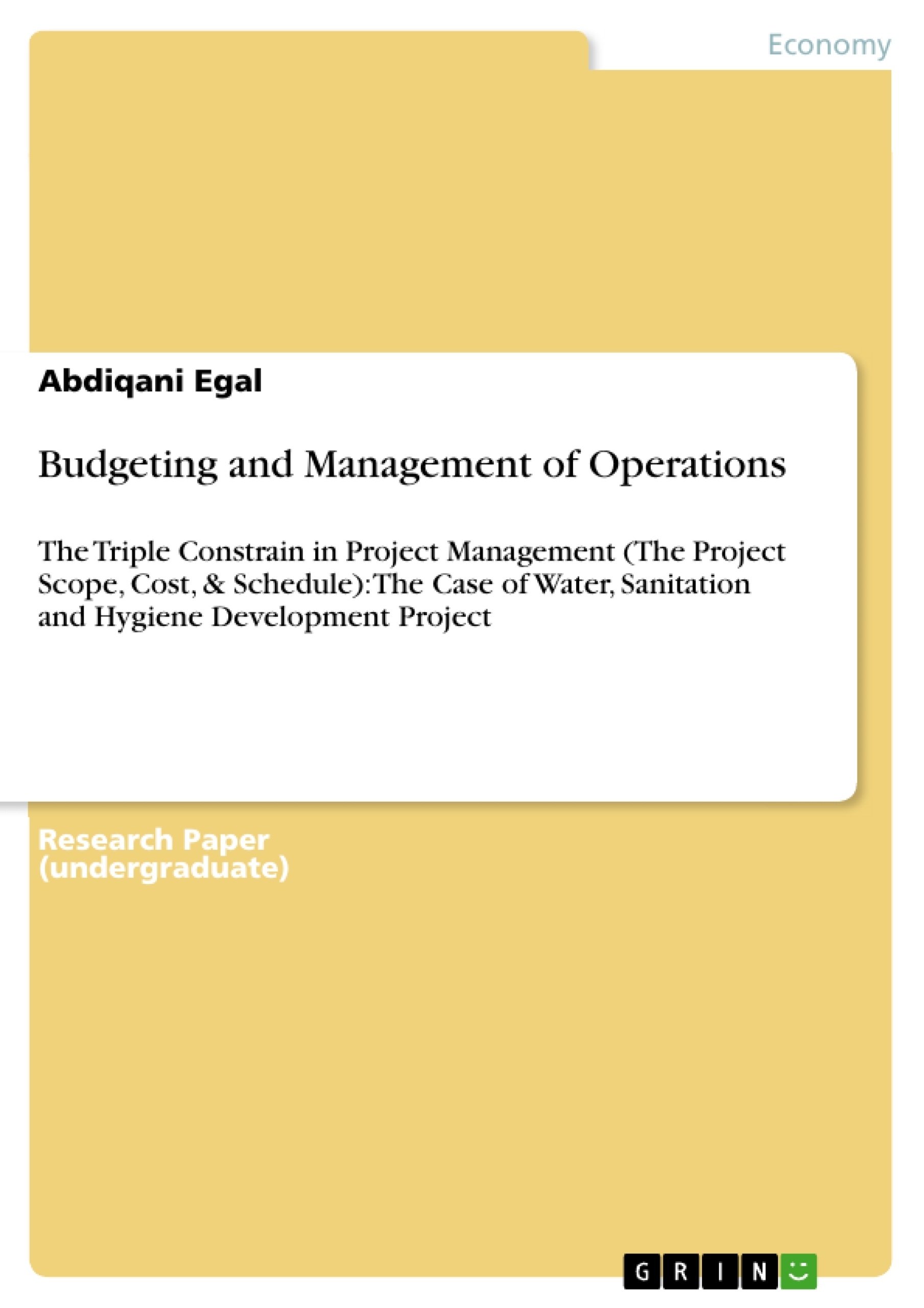The project scope, time and cost are the cornerstones of project
management. The triple constrains in project management is the concept
indicating the relationship in between the project scope, time and cost
management, it tells us that altering one of the three will affect other two
factors. While the scope, time and cost were proved being the project
performance measurements and determinant of the project success. Hence,
this brief essay intended to acquire the project management community
(students and managers) perfect understanding of what role do the triple
constrain play in the modern project based management particularly at the
project planning and monitoring and controlling management processes. It
describes with the existing link in between the project scope, Time and cost
Management processes.
Inhaltsverzeichnis (Table of Contents)
- Abstract
- Acknowledgment
- Introduction
- Description
- Literature Review of Triple Constrain in Project Management
- Project Scope Management Processes
- Project Time Management Processes
- Project Cost Management Processes
- Earn Value Management
- Schedule Performance Measurement
- Cost Schedule Performance Measurement
- Water Sanitation and Hygiene Project Case Study
- WASH Project Scope Management
- WASH Project Time Management
- Project Cost Management
- WASH project Performance Management
- Schedule Performance Measurement
- Cost Schedule Performance Measurement
- Conclusion and Recommendation:
- Bibliography
Zielsetzung und Themenschwerpunkte (Objectives and Key Themes)
This essay aims to explain the concept of the triple constraint in project management, focusing on its relationship with the project scope, time, and cost. It explores the importance of understanding and managing these three elements for project success. The essay aims to provide students and managers with a clear understanding of the role of the triple constraint in project management, particularly during the planning, monitoring, and controlling stages. Here are some key themes and ideas covered in the text:- The interdependence of project scope, time, and cost
- The importance of balancing these three factors for project success
- The role of the triple constraint in various project management process groups
- The use of Earned Value Management (EVM) for performance measurement and feedback
- A case study of a water, sanitation, and hygiene (WASH) development project to illustrate the concepts.
Zusammenfassung der Kapitel (Chapter Summaries)
- Introduction: The introduction defines the triple constraint in project management, emphasizing the relationship between project scope, time, and cost. It highlights the critical role these factors play in determining project success and their interdependence.
- Literature Review of Triple Constrain in Project Management: This section delves into the individual components of the triple constraint: project scope, time, and cost management. It explores the processes and principles associated with each, providing a comprehensive overview of their relevance within the overall project management framework.
- Water Sanitation and Hygiene Project Case Study: This chapter presents a real-world example of a WASH development project, utilizing the triple constraint principles. It examines the project's scope, time, and cost management strategies, showcasing how the triple constraint framework is applied in practice.
Schlüsselwörter (Keywords)
This essay focuses on the core concepts of project management, particularly the triple constraint, project scope, time, cost, and their interdependency. It also explores earned value management (EVM) as a performance measurement and feedback tool. The text provides a practical case study using a water, sanitation, and hygiene (WASH) development project to illustrate these key concepts in a real-world context.- Quote paper
- Abdiqani Egal (Author), 2012, Budgeting and Management of Operations, Munich, GRIN Verlag, https://www.grin.com/document/198786



